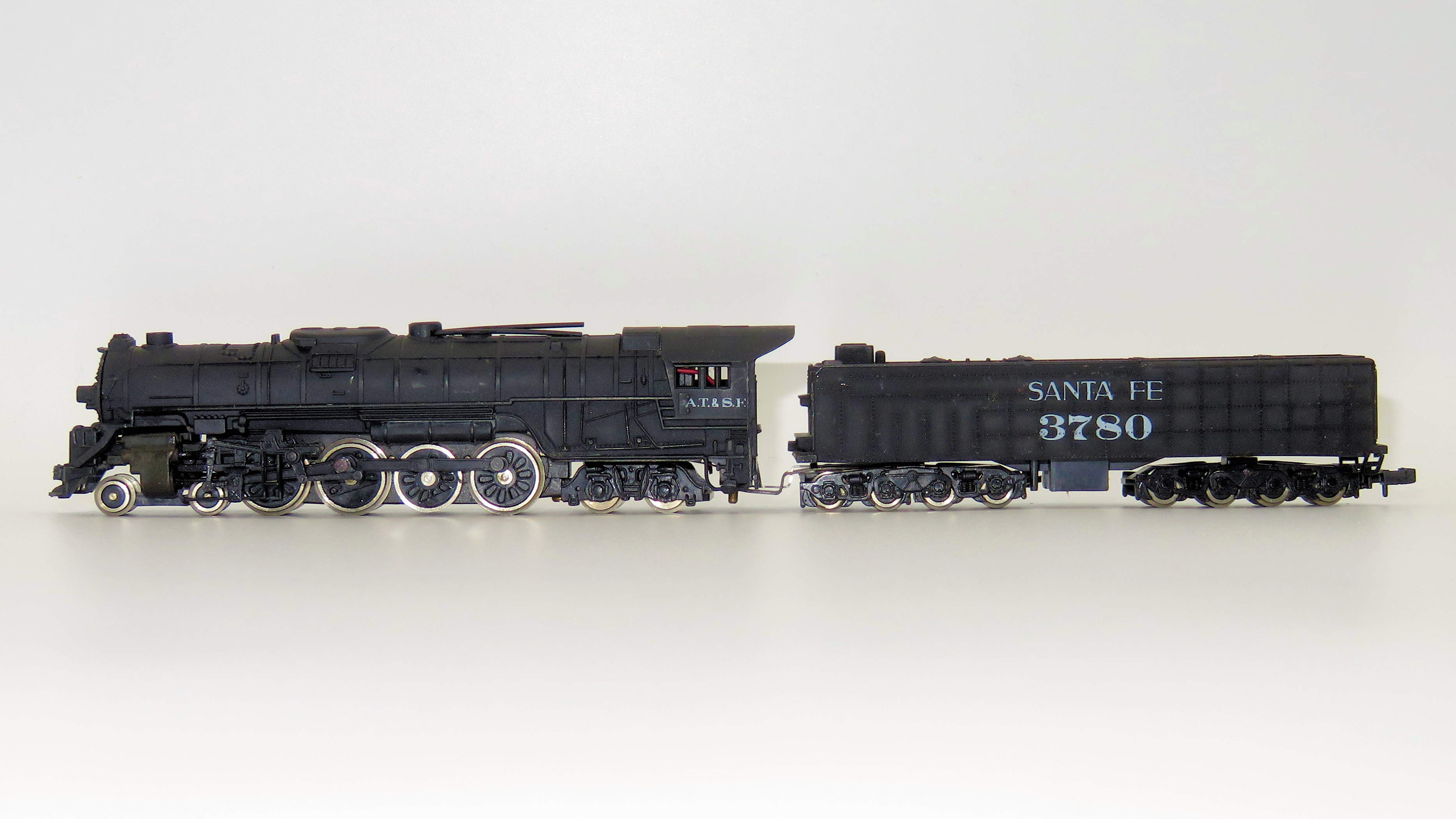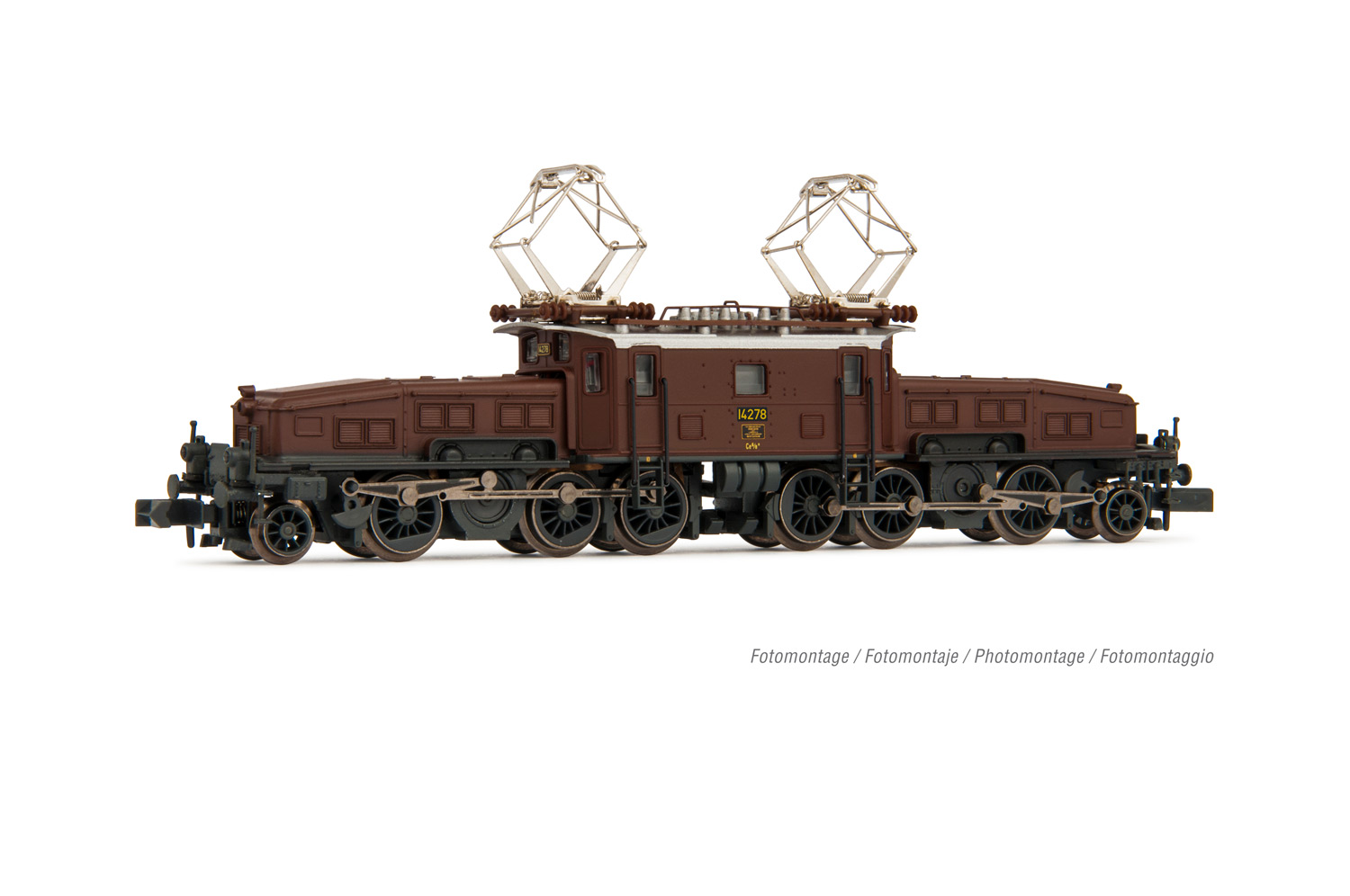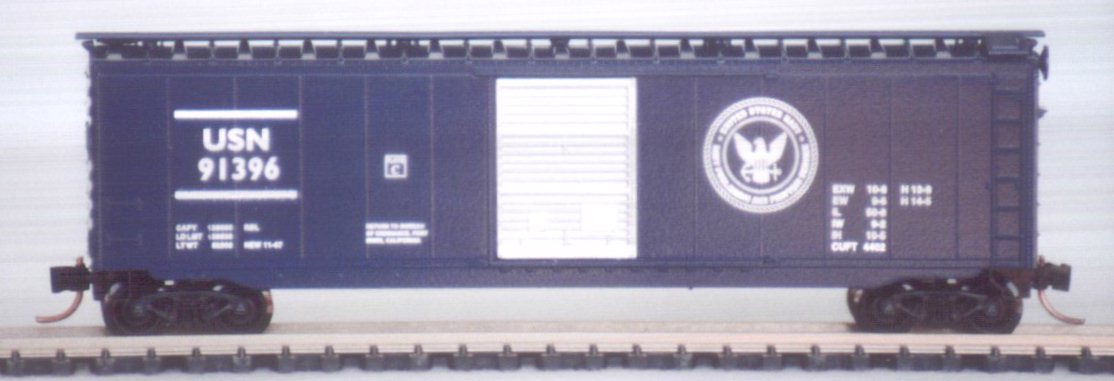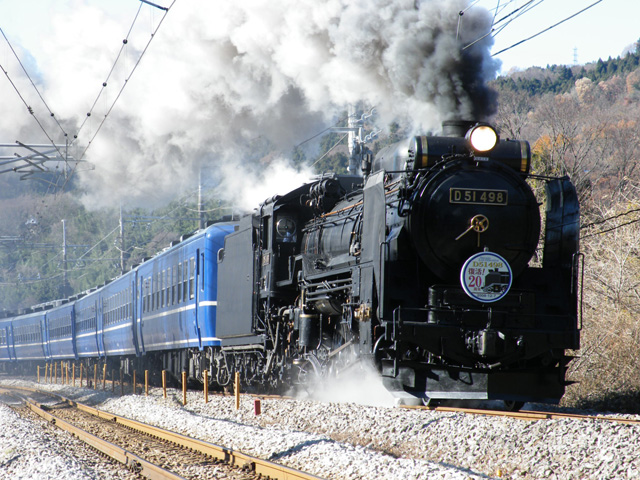Kato - 2024-1 - Engine, Steam, C57 - Japanese National Railways - C571
| Stock Number | 2024-1 |
| Original Retail Price | $175.00 |
| Brand | Kato |
| Manufacturer | Kato |
| Body Style | Kato Steam Engine C57 |
| Prototype Vehicle | Locomotive, Steam, 2-8-2 D51 (Details) |
| Prototype | Engine, Steam, C57 |
| Road or Company Name | Japanese National Railways (Details) |
| Road or Reporting Number | C571 |
| Paint Color(s) | Black |
| Print Color(s) | Gold & White |
| Coupler Type | Kato Operating Knuckle |
| Wheel Type | Chemically Blackened Metal |
| Wheel Profile | Small Flange (Low Profile) |
| DCC Readiness | No |
| Release Date | 2019-12-01 |
| Item Category | Locomotives |
| Model Type | Steam |
| Model Subtype | 4-6-2 |
| Model Variety | C57 |
| Prototype Region | Japan |
| Prototype Era | JP Stage 2: Nationalization (1906–1945) |
| Years Produced | 1936 - 1945 |
Specific Item Information:
The C57 No. 1 is a locomotive that was selected at the time of SL revival operation on the Yamaguchi Line, which started operation in September 1979, and was preserved in the Umekoji Steam Locomotive Museum at that time. This is one of the famous steam locomotives that has been taking over the role of towing since the SL Yamaguchi-go started operating and celebrating its 40th anniversary this year (2019). Originally, the main service machine for towing the SL "Yamaguchi" was the C57 No. 1, an indispensable item for the 35 series 4000 series passenger car set. Not only users who already have a 35 series passenger car set or D51 200.
Prototype History:
The Class D51 (D51形) is a type of 2-8-2 steam locomotive built by the Japanese Government Railways (JGR), the Japanese National Railways (JNR), and Kawasaki Heavy Industries Rolling Stock Company, Kisha Seizo, Hitachi, Nippon Sharyo, Mitsubishi, and Mitsubishi Heavy Industries from 1936 to 1945 and 1950 to 1951.
The design of class D51 was based on the earlier D50, introduced in 1923. Wartime production featured some substitution of wood for steel parts like running boards, smoke deflectors and tender coal bunkers. A total of 1,115 D51s were built, the largest number in any single class in Japan. Early D51s were nicknamed Namekuji-gata ("slug-form") for their shape. The locomotive was designed by Hideo Shima. It was used mainly in freight service through the 1960s.
The design of class D51 was based on the earlier D50, introduced in 1923. Wartime production featured some substitution of wood for steel parts like running boards, smoke deflectors and tender coal bunkers. A total of 1,115 D51s were built, the largest number in any single class in Japan. Early D51s were nicknamed Namekuji-gata ("slug-form") for their shape. The locomotive was designed by Hideo Shima. It was used mainly in freight service through the 1960s.
Road Name History:
 Japanese National Railways (日本国有鉄道 Nihon Kokuyū Tetsudō), abbreviated Kokutetsu (国鉄) or "JNR", was the business entity that operated Japan's national railway network from 1949 to 1987.
Japanese National Railways (日本国有鉄道 Nihon Kokuyū Tetsudō), abbreviated Kokutetsu (国鉄) or "JNR", was the business entity that operated Japan's national railway network from 1949 to 1987.
By 1987, JNR's debt was over ¥27 trillion ($280 billion at 2009 exchange rates) and the company was spending ¥147 for every ¥100 earned. By an act of the Diet of Japan, on April 1, 1987 JNR was privatized and divided into seven railway companies, six passenger and one freight, collectively called the Japan Railways Group or JR Group.
From Wikipedia

By 1987, JNR's debt was over ¥27 trillion ($280 billion at 2009 exchange rates) and the company was spending ¥147 for every ¥100 earned. By an act of the Diet of Japan, on April 1, 1987 JNR was privatized and divided into seven railway companies, six passenger and one freight, collectively called the Japan Railways Group or JR Group.
From Wikipedia
Brand/Importer Information:
Kato Precision Railroad Models (関水金属株式会社 Sekisui Kinzoku Kabushikigaisha) is a Japanese manufacturer of model railroad equipment in N and HO scales. The Tokyo-based company manufactures models based on Japanese prototypes (such as the Shinkansen bullet train) for the Japanese market, North American prototypes for the North American market and European high-speed trains for European market.
The Kato (pronounced kah-toe) model railroad companies were founded by Yuji Kato, father of current president Hiroshi Kato, of the parent company Sekisui Kinzoku Co., Ltd.
The design and distribution of models for the North American market are handled by their U.S. subsidiary, Kato USA, located in Schaumburg, Illinois.
The design of special models for the European market is handled for some of them by their partner, Lemke, whereas the general distribution of Kato products in Europe is handled by NOCH; both companies are located in Germany.
As a result, some Kato European models are sold as Kato Lemke and others as Kato (alone).
The Kato (pronounced kah-toe) model railroad companies were founded by Yuji Kato, father of current president Hiroshi Kato, of the parent company Sekisui Kinzoku Co., Ltd.
The design and distribution of models for the North American market are handled by their U.S. subsidiary, Kato USA, located in Schaumburg, Illinois.
The design of special models for the European market is handled for some of them by their partner, Lemke, whereas the general distribution of Kato products in Europe is handled by NOCH; both companies are located in Germany.
As a result, some Kato European models are sold as Kato Lemke and others as Kato (alone).
Item created by: CNW400
on 2020-03-05 08:59:24
Last edited by: Lethe on 2020-05-07 00:00:00
If you see errors or missing data in this entry, please feel free to log in and edit it. Anyone with a Gmail account can log in instantly.
Last edited by: Lethe on 2020-05-07 00:00:00
If you see errors or missing data in this entry, please feel free to log in and edit it. Anyone with a Gmail account can log in instantly.










